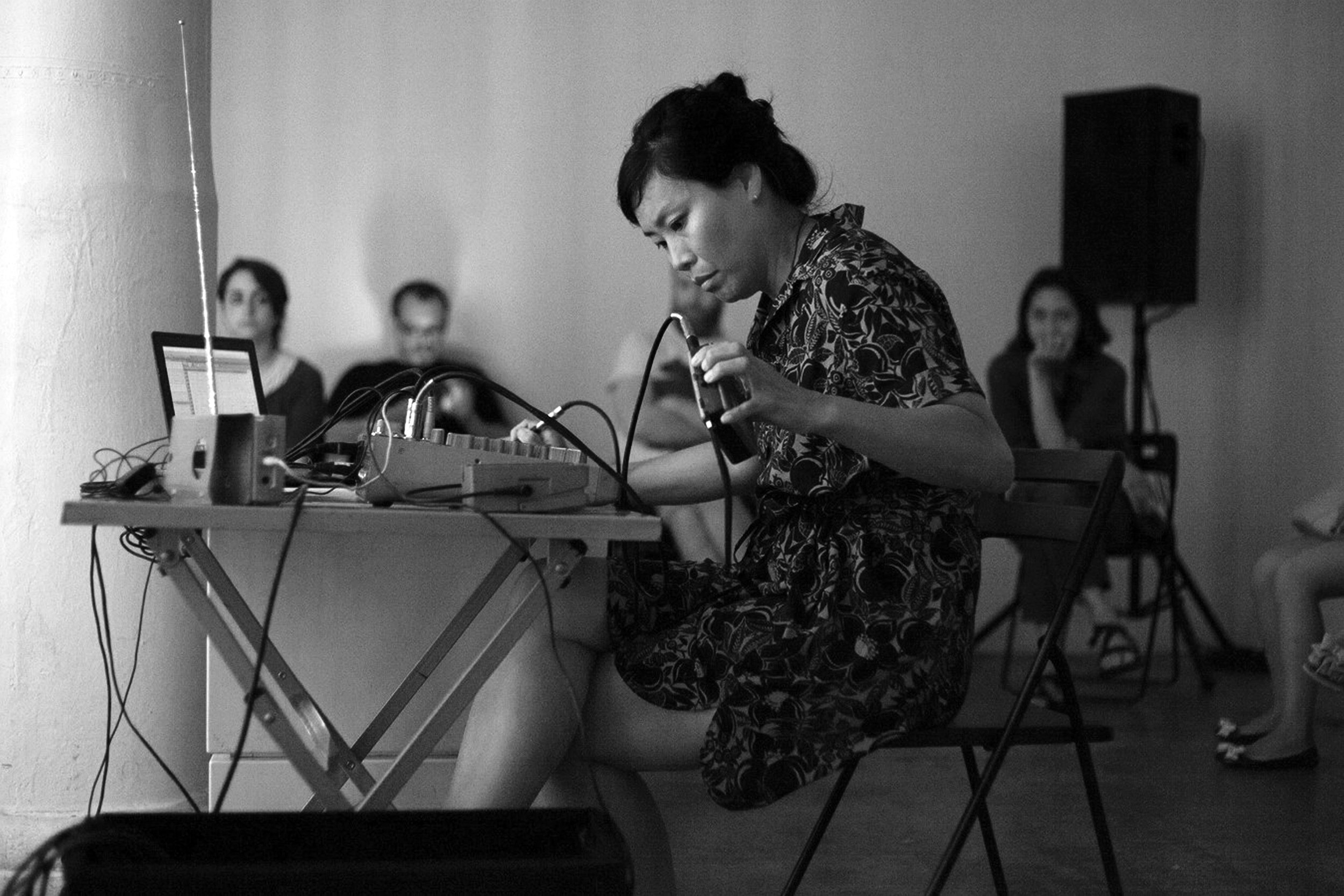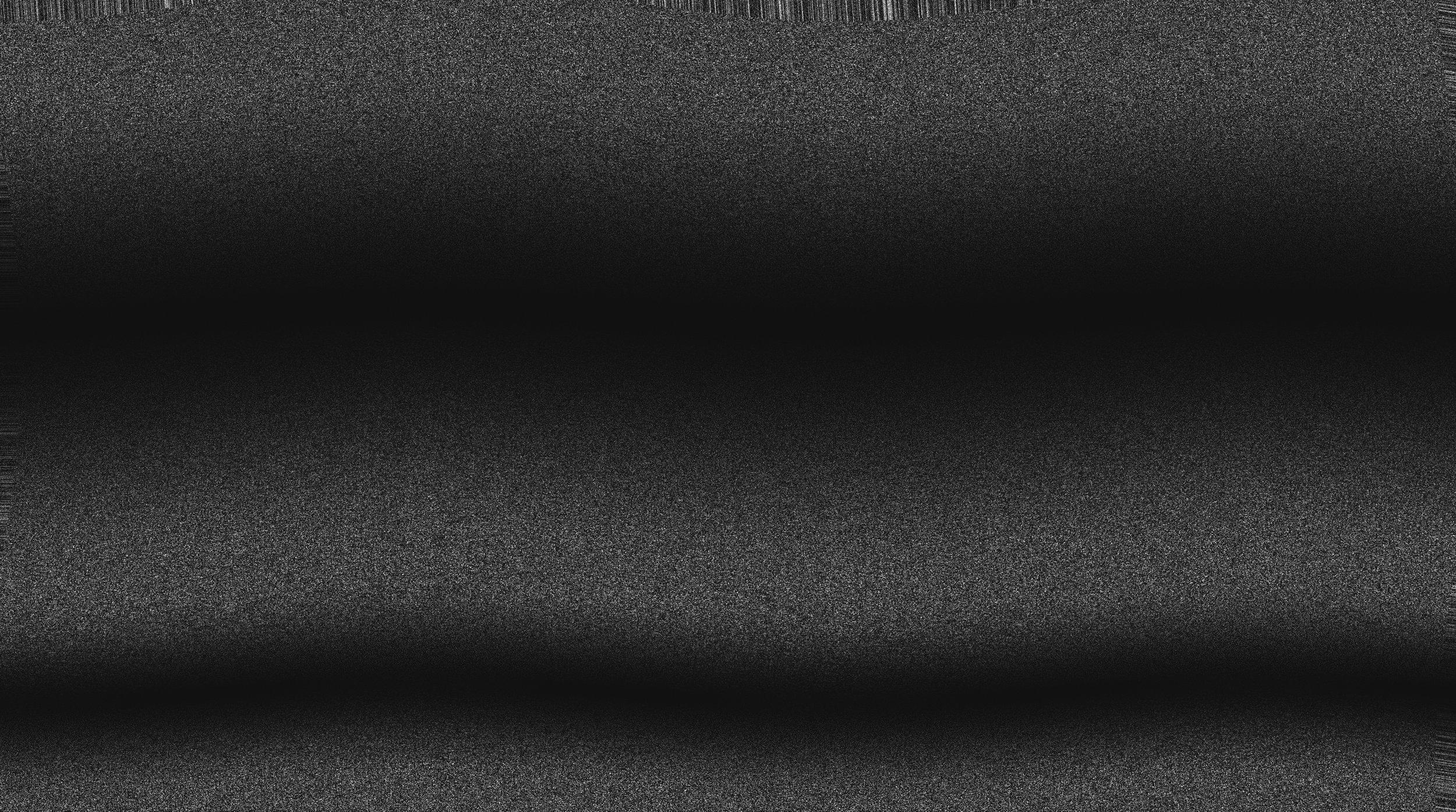2019Tonal Ambiguity
A studio visit with Bonnie han Jones
Story by Angela N. Carroll | Photography: Bradford Bailey & Fridman Gallery
Noise is typically defined as sounds that are unpleasant or that cause a disturbance. Musician, artist and improvisor, Bonnie Jones, uses varying intensities of noise to create immersive sound environments. Her early works looped samples she captured from her environment into ruptured rhythms and unintentionally melodic scales. Her latest compositions consider the sonic self, sine waves, dissonance and the effects of noise frequencies on a listener’s body and psyche. “The work is an investigation of how the sonic self can be expressed.” Jones noted during our studio visit, “How much of it is understood? What is or isn’t legible in that kind of composition? That questioning space is something that I am always interested in and thinking about.”
Noise musicians engage tonal ambiguity. Jones’ experiments are founded in classical music and American free jazz movements; Bach, Stockhausen and the harmolodic improvisation of Ornette Coleman were especially influential. Like free jazz, noise escapes convention. “Sounds tell stories,” Jones adds. Her current works explore the paradox of Korea’s Demilitarized Zone (DMZ) – a no man’s land that stretches 160 miles (250 km) across the 38 parallel in South Asia, serving as a neutral zone demarcation between North and South Korea. Jones calls the DMZ “a scar.” It remains ironic that the DMZ has become a sanctuary a rich ecosystem of many endangered species of plants and animals. The red-crowned crane, a bird that migrates annually to the DMZ, has become a symbol of peace, longevity and purity across South Asia.
Using a multichannel installation with varied frequencies of noise, Jones mimics the sense of displacement she imagines in the DMZ. Like Tarkovsky’s cinematic meditation, Stalker (1979), Jones’ sound constructions conceive of the DMZ as a sonically active landscape that can trigger psychological and physical reactions. The noise is rendered from raw white, pink, grey and brown frequencies as well as “body frequencies” she creates by measuring the hertz of her voice and playing it as pure tones. The installation interrogates the land as a metaphor for identity through a study of dislocation, noise on the body and the oddity of spaces like the DMZ. Jones started to play noise. As she moved from gray noise to white noise, white noise to pink noise, I listened for variations. I was surprised that I felt the shifts even before my ears and mind could interpret what it was that I was listening to. I asked her to explain what I was hearing and how those sounds relate to color.
“Free jazz means freedom from 4/4 as well as freedom from playing over prescribed harmony.”


Listening to frequencies and properties of electronic sound does very unique things to people’s bodies. It changes their perception to space.
Jones started to play noise. As she moved from gray noise to white noise, white noise to pink noise, I listened for variations. I was surprised that I felt the shifts even before my ears and mind could interpret what it was that I was listening to. I asked her to explain what I was hearing and how those sounds relate to color.
Bonnie Jones: I think about noise, white noise, brown noise, gray noise, pink noise as a sonic metaphor. The experience of those sounds is unusual and can be spatially disorienting; you hear a lot of things in there. White noise is all audible frequencies from thirty hertz to thirty thousand, which is human hearing. As you move through different colors, they are loose approximations that give some analogy to visual light, it’s a way to describe the different ways that frequency intensity shifts along that spectrum. White noise is a mapping of all light frequencies and all sound frequencies. Brown noise has more intensity on the lower frequency. Gray has a slight slope that is higher as you increase in frequency. Pink is a color that we associate with the white noise machines, the low frequencies have more intensity and the high ones have less. The reason that pink noise sounds better to our ears as opposed to white noise is because it follows more the principles of how we hear. We only hear in octaves.
Listening to pure white noise is unsettling. The sound makes your ears buzz and throb. I found myself swallowing hard to force my ears to pop. I could not imagine spending hours of a day listening to noise and I wondered aloud how Jones grew to use noise as a medium.
BJ: Intuitively, I knew I was drawn to this improvisational methodology and non-hierarchical, non-historically grounded music. It’s not just noise per say. Noise music as a definition is really tricky. If you think of the physics definition of noise—unwanted sound—that is variable to whoever you are and whatever your ears are acclimated towards. In a purely engineering context, the unwanted sound in a signal degrades the ability for the signal to pass through. As a musical tool or a sonic phenomenon or just a thing that happens in life, everybody defines sound in incredibly personal and subjective ways. In a cultural definition it tends to be associated with John Cage, loud harsh electronics, hardcore music or some really out free jazz. I define it – I don’t know, I define it as undefinable, as a shape that accommodates any intention.
Noise has been the perfect way for me to get into ideas about identity and noise as a physical, emotional or environmental phenomenon. Listening to frequencies and properties of electronic sound does very unique things to people’s bodies. It changes their perception to space. It makes them hear sounds that don’t exist. It does all of these amazing things, reminding people that sound is a physical phenomenon much more so than visual culture. Sound is as intimate and intense as someone touching you. It’s a pressure wave that enters your body, like light photons.
My ears finally adjust to silence and our conversation veers off into physics, obscure Korean psychedelic musicians, and the possibilities of art as a tool for radical imagining. I asked Jones about the purpose of her experiments in using noise as art.
BJ: What would it mean for me to try and have a self-sound-consciousness? There are stereotypes around what sounds my body should be making or what instruments my body should be playing. What role can I fulfil in the musical fantasy of someone else? As a female musician, you have to avoid being a sort of object of pleasure for the male electronic musicians who may fetishize you. The sounds themselves are so resistant; they resist so much historical burden. I am interested in how music can exist as a carrier of history, ideas and personhood. There is a freedom that these instruments help me reach towards. It’s like you can always subvert who people think you will be and validate who you know yourself to be. U
To learn more about Bonnie visit bonnie-jones.com and technesound.org. Check out their music on Bandcamp.
——
Angela N. Carroll is an artist-archivist, writer, curator, and investigator of art history and culture. She regularly contributes critical essays to significant publications, including Sugarcane Magazine, Black Art in America, BmoreArt, and Hyperallergic, and also writes art exhibition catalogs for prominent institutions including Columbia University, The Baltimore Museum of Art, Rena Bransten Gallery, among others. Angela's latest project, Exploring Presence: African American Artists in the Upper South, a catalog, exhibition, and 10-short-film docuseries surveys under-recognized artists in Baltimore and Washington, D.C. She received her MFA in Digital Arts and New Media from the University of California at Santa Cruz. Learn more here.
